|
I was connecting with Liz Stockton of X-Port Paws recently about No Kill philosophies and specifically about how some people say that if we just did ________________ (fill in the blank with one thing) the problem would be solved and all the healthy and treatable animals in our nation's tax-funded animal shelters would be saved. I wish it was that simple. Really. I do. If you are familiar with this blog or my website at all, you know I promote the No Kill Equation and have since I first learned about it almost 20 years ago after reading Nathan Winograd's groundbreaking book: Redemption: The Myth of Pet Overpopulation and the No Kill Revolution in America. The short explanation is that the Equation is a DIY series of programs that work together to help reduce the number of animals entering shelters (while helping the public) and that help animals who do end up in shelters to be placed faster (know of as a shorter "length of stay"). All shelters can and should learn about the Equation and take immediate action to stop the outdated (and I would argue unethical) practice of ending the lives of healthy and treatable animals for space or convenience. There are other ways to function and to the extent any shelter purposefully remains mired in the past, I view that a betray of the public trust. After speaking with Liz, I wanted to address the "If We Just Did This One Thing" theories I hear about most often. Spay and Neuter. Not a week (often not a day) goes by when I do not learn of someone saying, "if people would just spay and neuter their pets, animals would not die in shelters." It is absolutely true that if more people spayed and neutered their pets in any given community, there would be fewer animals in the community which may mean fewer animals entering the tax-funded animal shelter. I know some veterinarians charge hundreds of dollars for the surgery and a lot of people just can't afford that while trying to pay rent and feed their families. We can tell them that it costs more to care for a litter than to just have animals sterilized but that's a hard sell when your kids are hungry and there doesn't appear to be an immediate risk your dog will cause a pregnancy or become impregnated. Access to high volume/low cost spay neuter is one of the 11 elements of the No Kill Equation which helps keep pet populations low which, in turn, reduces intake. In the city where I work, there is a nonprofit spay/neuter clinic that is open to anyone no matter where they live or how much money they make. The city also funds a spay/neuter program for low-income residents so they can have pets sterilized for $5. This program, the availability of the nonprofit clinic and other factors have helped cut the shelter intake at the tax-funded animal shelter in half over a period of about five years. Communities that make an investment in programs like this are getting ahead of the issue by spending to prevent births as opposed to spending to impound, house and then destroy animals. I also support laws that require any animal adopted from a shelter or rescue group to be sterilized. I know there are some animal shelters and rescue groups that transfer ownership of animals old enough to be sterilized who are still intact. For shame. I know this happens a lot and it is irresponsible. The "promise method" some shelters use to try to get people to have animals sterilized after they are adopted seldom works. People may agree to have the animal spayed or neutered and may even sign a document in which they agree to do that. Once ownership is transferred, enforcement of the promise method is practically impossible. People often mean well and plan to have the surgery performed but then other priorities (either financially or based on busy schedules) prevents that from happening. Once ownership has changed hands, the shelter can't just demand the animal be returned and even if someone signed a document promising to have the surgery peformed, it becomes a civil issue to be handled legally, something I have never seen a shelter attempt. Ever. I do not support mandatory spay neuter for owned animals, often called MSN. This is punitive legislation that tries to force people to have all owned pets sterilized. Even in places that have MSN, there are exceptions for breeders, exceptions for people who do not want their pet sterilized on advice of their veterinarian and enforcement is almost impossible. I blogged about this fairly recently and will not cover this same topic in full again. I do encourage anyone who believes forcing people to have pets sterilized (as opposed to making it easy and affordable) to read my blog linked above. If you still support MSN after having read it, feel free to contact me so we can talk about your position. As Nathan Winograd says in his video No Kill 101 (which I share with elected officials often): "for decades, spay/neuter has been hailed as the singular solution to shelter killing, though it alone has never successfully created a No Kill Community. Why? Because spay/neuter focuses primarily on those animals who have yet to be born, leaving the animals already in shelters and who are under an immediate death threat with no protection from killing. In other words, while a significant investment in sterilization can reduce intakes over the long term, and that is important, it is no substitute for saving lives today." Rescues and Transports. There are those who profess that the single solution to end shelter killing is to get more rescue groups to help get animals out of shelters to transport more animals to different parts of the country. I've read a number of blogs recently that say just that. Rescuers are some of the most hard working people in the country and are to be applauded by us all. But for rescue groups, many more animals would die in tax funded shelters than do now. I clash with some people in animal rescue circles because their adoption fees price the animals they are trying to place out of the market (as they try to recoup veterinary costs through adoption fees alone), because they refuse to limit their efforts to a geographic area (in their efforts to help more animals than they can responsibly care for) and because so many of them have such loathing for people. Animal problems are people problems and it really is not possible to help animals without helping people in some way. In progressive communities, shelter liaison with rescue groups is incredibly important and is one of the 11 elements of the No Kill Equation. Rescue release should typically be just a fraction of all live outcomes with the other live outcomes being the result of returns to owner and adoptions. I know some in rescue refuse to adopt animals locally because they say the people in their area are too irresponsible, can't be trusted, etc. I once had a contact who drove dogs about an hour to a pet store location to hold adoption events. When I asked her how she was ever going to connect in a positive way with the people in her own community if she acted like they could not be trusted, she could not respond. When I hear or read that THE solution to keep more animals alive is for rescues to pull most of the animals (in most cases to transport them to other areas) I simply cannot agree. There are cases in which nonprofit organizations with a physical shelter contract with one or more municipalities for animal control and sheltering. Most rescue groups, however, are foster-based and function off of donations and grants with no tax-funded support. Rescue groups cannot carry the burden of life-saving for any community not only because they have a limited amount of space to house animals and limited funds to help animals, but also because doing so enables the failures in leadership that create unreasonable reliance on them exists. If a rescue group in any particular area is pulling the vast majority of animals, what incentive is there for elected officials to take responsibility for how their shelters function and how money is spent? None. I know a lot of people in the rescue community view saving animals as a life calling. My argument is that they should be considered part of the solution and not the only solution. The No Kill Equation is not rescue release, rescue release, rescue release, rescue release, rescue release, rescue release, rescue release, rescue release, rescue release, rescue release and rescue release. I know a lot of rescuers are frustrated now, particularly those who have historically relied on transports to other states to move animals. That became abundantly clear during the pandemic, when receiving states would no longer take animals from the source states. I know there are times when people find an animal on a site like Petfinder located hundreds or thousands of miles from them or otherwise learn about an animal on social media who is located far away and decide to adopt. I do not oppose transport for the sake of getting a specific animal from Point A to Point B for those long-distance adoptions. I do oppose mass transports from source locations to receiving locations where the lives of animals are already at risk. One such example is the pipeline between northern Alabama and Chicago. People may like the idea of saving southern animals from what they consider a fate worse than death by shipping them north. But news flash. There are plenty of animals in Chicago already who need help and importing them from other states only makes it harder to place local animals in need. And when nothing is done in the source location to address the reasons why so many animals need help, it is another enabling behavior. I know thousands of animals are transported from Texas to Colorado every year. Every life saved is a wonderful, positive outcome. But if we aren't doing anything to stop the flow of animals from Texas we are doing a disservice to the people who live in Texas and the animals being shipped north. A contact of mine who is the president of a local nonprofit phrased it this way years ago and I have always remembered what she said: the number of animals needing help is like the flow of water through a faucet. If we ever hope to stop the volume of need, we have to turn off the faucet. Yes, Jane. Stop dog breeding. The third solution I see most often, particularly on social media, is the way to keep more shelter animals alive is to "stop people from breeding animals." I do not discount that the volume of animals bred in our country, particularly commercially, contributes to the volume of animals in shelters. Millions of puppies are born and sold each year; it is a multi-million dollar industry. I am not aware of any study that shows a direct connection between dogs bred in Missouri with dog intake in Florida or Tennessee or California. It is logical to assume, however, that because millions of dogs are bred in the U.S. and are sold on websites and by brokers using creative marketing that appeals to consumers, people looking for a dog to add to their family often buy dogs through those methods like they would by a laptop or a sofa. I've written many times about issues related to the commercial dog breeding industry which I oppose and which is often supported by the rescue community. I have also written about the fact that dog breeding is legal and as much as people chant, "don't breed or buy while shelter dogs die," that is just not realistic. I always encourage people to adopt as a first option; I do all I can to persuade them they can find a great fit for their family and that shelter animals are not damaged. As much as I would never buy a dog from a hobby breeder (someone who breeds dogs on a small scale for the love of the breed) or small-volume breeder, many people do and that is their right. A co-worker of mine recently bought a Jack Russell from a breeder in Georgia. Do I wish he had adopted instead? Of course. But it was his choice and not something I was able to influence in any way. For people who genuinely feel that breeding is an issue in their community and is leading to more shelter intake, I encourage those people to create and advance local legislation that requires breeders to pay fees for their business, that creates standards for those operations, and that provides criminal penalties for failing to adequately care for the breeding dogs and the dogs they sell. I also encourage them to get involved on the state level to advance similar legislation for the sake of not only the dogs being bred, but the people who adopt them to make sure the dogs are healthy (something severely lacking in many dogs bred in commercial operations). Local ordinances that prevent pet shops from importing dogs for sale in a retail setting are also important to keep businesses like Petland from setting up shop; once a store is open and is selling their puppies, it is almost impossible to stop. Fires and How to Extinguish Them. In thinking back about my conversations with Liz, there is one other issue I want to touch on related to solutions to shelter killing. I am aware of people who spend a lot of time traveling around the county to bring awareness to what happens in our nation's animal shelters, who blog on that topic and who post about it on social media. I firmly believe that awareness leads to education leads to action leads to change. As much as people in animal advocacy and rescue circles believe the public should know about what is happening at their local shelter, most people just don't because it is not on their personal radar. It's incredibly important that we let the tax-paying public know what is happening at the shelter in their community so they know what they are paying for while they are, in most cases, blamed for a process that leads to the death of healthy and treatable animals. Only when people know what is happening can they participate in the political process and let elected officials know what they want and expect, perhaps even voting them out of office.
What I take issue with is the functional equivalent of yelling fire in a crowded room. Don't raise awareness - on any platform - to the needless deaths taking place nationally without also providing information and tools people can use to understand how we can change our society related to how shelters function. And without claiming it will just take __________________ (fill in the blank with one thing) to fix systemic issues. Don't yell "fire!" (animals are dying) without also pointing the way to the exits and explaining how the fire can be extinguished (saving animals using proven programs). The solutions have been known for almost 20 years and are available for the taking. The No Kill Equation can be implemented in any community and will always look different from location to location based on resources, challenges and the amount of public support. If, for some reason, you are not convinced the Equation works anywhere it is fully implemented, fine. Then develop or find some other solution that actually works and which does not rely on the "If We Just Did This One Thing" theory. I think you will find that to be incredibly difficult but am capable of learning new things. If someone can convince me another methodology works better than the Equation, I will consider myself schooled. If you live or work in a community where the tax-funded shelter ends the lives of healthy and treatable animals, speak out. Seek better. It may be necessary to become politically active as part of a group to try to "fight city hall." Don't wait for a large national animal welfare organization to come to your area to save the day because that's just not gonna happen. If you don't hesitate to complain about potholes in the road, timing of traffic lights, garbage pick-up and police response i your area, you can (and should) also be clear about how you want your money spent when it comes to balancing public safety with saving the lives of companion animals. Nothing changes if. . .nothing changes. As Margaret Meade once said, "Never doubt that a small group of thoughtful, committed citizens can change the world: indeed, it’s the only thing that ever has."
0 Comments
I was contacted by a friend of mine recently who shared a blog she had seen on social media about myths related to No Kill animal shelters. This particular author said that animal welfare is her life but it was also making her lose her mind. How every unfortunate not just for her related to her mental health, but because she chose to share information that is not accurate. I presume she means well. I also presume she has read information to cause her to be hypercritical of the No Kill movement. There is no shortage of negative information to be found online. Opposition to progressive animal sheltering has existed for decades back to the early 1970s when large national animal welfare organizations (or so they claim) promoted the idea that killing was kindness and there is much opposition even today by organizations like PETA. I reached out to the author to try to start a dialogue with her in hopes of advancing her education. Will it work? I'm not sure. Cognitive dissonance abounds in animal shelter and animal rescue circles and it can be really hard for people to recognize what they believed for years was, well, just wrong. I will not link to the blog here. I originally planned to write a blog to counter most of the author's claims, but ultimately decided that would not help many people. I've decided instead to talk about myths and truths so the information can be used by others as they advocate for animal shelter reform in their own communities. And so they can counter false information when they see it. As the saying goes, everyone is entitled to their own opinion but we are all bound by truth and share one set of facts. I won't cover the myths already addressed in my book because they have already been covered. If you want a copy of my book and are not a "hold it in your hands" reader, let me know and I'll share the pdf with you for free. No money is being made on the book when you buy it from Amazon (you are paying to have it printed ) so I share it as a pdf file often. Shelters exist because of the negligence of the general public. If every member of a community were mindful and responsible, shelters would sit empty. This is not true. Shelters in most states exist related to public safety laws that require a place for animals not vaccinated against rabies to be housed, to house dogs running at large and to house animals in suspected cruelty cases pending due process determinations by courts. The fact that the best shelters also function as animal care facilities and not disposal facilities is a response to public expectations. Just because a dog is found running at large does not necessarily mean someone has been negligent. There are some people who let dogs run loose in more rural areas which is clearly irresponsible; that's a huge problem where I live and I see the results of that every time I get in my car. Most loose dogs are lost or displaced due not to negligence but due to some unforeseen circumstance. Doors get left open by children, gates get left open by contractors, dogs dig under and climb over fences, fireworks startle dogs, vehicle accidents happen and natural disasters happen. Ask Davyd Smith of No Kill Colorado how many times his dogs have gotten loose and he'll tell you his stories. Cruelty cases often end up related to a form of mental illness called "Noah Syndrome" about which I have written before and while these cases are tragic, they often result in no criminal consequences. As for the claim that shelters would sit empty, that is an incredibly naive statement. There will always be animal shelters and they will always be needed for both public safety purposes and to help those animals who either were, or could be, someone's beloved companion. That is what the public expects and I just don't see that changing any time soon. In fact, as time goes by more and more people are learning about animal sheltering and about No Kill philosophies as they seek better use of their tax dollars consistent with public values. Shelters are forced to make hard decisions to remain available to the public, including euthanizing for space. This is not true. The only hard decision any shelter need make it to stop killing healthy and treatable animals while calling it euthanasia and behaving as if there is no other way to function. The cure for the disease that is shelter killing has been known for almost two decades and it is the No Kill Equation, a series of programs that work together (thus, use of the description "equation") to reduce shelter intake and increase shelter output while helping the public instead of vilifying the public. To the extent any shelter has not learned about proven programs to help resolve systemic issues that lead the unnecessary killing of animals, that shelter is mired in a past that has not kept up with public expectations and advances in shelter medicine. Theirs is a betrayal of the public trust. Rescue organizations should not boast about being No Kill. I honestly know of no rescue organization that is NOT no kill. Rescue groups function off of donations and grants. Exceedingly rare is the non-profit organization that receives any type of funding from tax dollars unless that organization is contracted to handle sheltering as is the case in Fremont County, Colorado led by the inspiring Doug Rae. To take on more animals than the organization can actually care for and place would be irresponsible and is a kind of hoarding. Yes, rescue organizations sometimes euthanize animals who are suffering, irremediably ill or present a genuine public safety risk and we should expect no less of them. But they don't end lives as a from of population control killing. Having said that, I am the first to admit that some tax funded animal shelters describe themselves as being No Kill operations when they are anything but. They do so to garner public favor and even donations while at the same time either warehousing animals or ending the lives of healthy and treatable animals while claiming they were "unadoptable" or "aggressive." That is why it is up to all of us who care about how animal shelters operate (or at least about how tax dollars are spent) to learn about how shelters can and should operate so we can see through use of the phrase No Kill by bad actors and call them out of those false claims. Animals who end up in shelters are unwanted, thrown away and forgotten. As explained above, just because an animal enters a shelter does not mean that animals is not wanted, has been forgotten or has been thrown away. When shelters take that type of attitude, the public becomes the enemy when it is that same public the shelter needs to adopt animals, foster animals, volunteer at the shelter and at events and even donated to the shelter. Doing so is totally counterproductive toward the goal of modifying public behavior = helping people make better choices. When the public becomes the enemy, it creates a divide between the shelter and the public being served (or rescue groups and the public) in an us v. them way that is just not helpful. Change comes when you first demand it from the members of your community.
This is not true. Demanding people behave differently presumes they are doing something wrong in the first place. Whether people in shelter or animal rescue circles want to acknowledge it or not, most people give very little (if any) thought to their local animal shelter or how their personal choices affect how shelters operate when it comes to having pets spayed and neutered, making sure pets can be identified if displaced and making plans for someone to care for their pets in the event of their death or some live crisis. It is up to us to help educate the public so they can make better choices that help keep animals out of shelters. A couple of the websites I manage have content for this very purpose. To help people. In places where the shelter went from ending the lives of most animals to saving most lives, the public did not suddenly move away to be replaced by more responsible people. What changed was the culture that the shelter which decided to save lives instead of end them and be seen as places not of judgment but of help and positive outcomes. Think about it. Animal shelter reform advocacy is tough work. It can consume every day of the week with no days off. It can lead to the loss of long-time contacts and even some people we once considered friends. It can be mentally exhausting as common-sense principles are shared with people who are so personally invested in the status quo that they would rather continue ending the lives of healthy and treatable animals than listen. Just listen. It can be emotionally draining as those intent on defending the killing focus not on the message but on the messenger, as if they are somehow responsible for the fact that the words "please stop killing healthy and treatable animals" have to be said in the first place. I first began advocating for animal shelter reform in 2006 after the loss of our dog Snake. We had her euthanized to keep her from suffering. We know exactly what the word "euthanasia" means so when I learned almost 20 years ago that healthy and treatable animals were being killed in places called "shelters" and they were calling it euthanasia, I knew that was all kinds of wrong. Almost 20 years into this venture, I continue to learn more with the passage of time and I have had my mind changed on some subjects along the way as I have educated myself or been educated by others. I am fully capable of saying, "I was wrong. Thank you for helping me see a new point of view." I have heard before that advocacy to try to reform animal shelters is a marathon and not a sprint. To the extent we talk about national trends, I fully agree with that statement. Times change, people change, values change. In the 1970s, shelters were ending the lives of some 16 to 17 million animals each year. Let that one sink in. 16 to 17 million. By the end of the 1990s that number was down to about 7 to 8 million. It is now less than 1 million animals each year which is still way too many. As is the case with many social movements in our country, change never happens as fast as we would like as it can take decades to see progress. We do best to keep ourselves updated not only on the latest methods being used at progressive animal shelters like the Lake County Florida Animal Shelter and the Humane Society of Fremont County in Colorado (which holds a dozen municipal contracts), but also on how some former leaders in our movement have lost their way and tried to take the public with them. It is hard enough to try to persuade antiquated shelter systems to change. That process is made twice as hard when people lose sight of what works well and instead focus on their own form of celebrity as advocates. Dangerous things can happen for our communities and the animals we love when conversations best shared over too many glasses of wine are instead put forth as viable operational methods. When it comes to local advocacy, I've had a change of heart as it relates to the "sprint not a marathon" description. It is neither, at least in my world. I had my first meeting with the mayor of the city in which I work in January of 2009 after having written to him following the municipal election in 2008. I said, "we can do better" and he wanted to talk about that. When I was not able to affect change on my own after we met, I formed an advocacy coalition in January of 2012. We are in our 12th year of advocacy which has had mixed results. The most intense period of our advocacy began in 2013 after the city refused free help from subject matter experts and we took the issue to the public which was paying attention. We had the attention of the community, a large following on social media and our website and support from local television and print media. We held events, we sold t-shirts and car magnets, we rented electronic billboard space, and we got time on the local public radio station. We were on a roll. That intense period lasted through about 2018 when the city began making changes to the shelter operation and we finally saw improvement in the live release rate which had gone from 49% for dogs and 30% for cats in 2012 to 90% for dogs and 95% for cats in 2018. We knew the city could do even better so our advocacy continued as we promoted our first version of the Huntsville Animal Protection Act and kept pressure on city officials to hold them accountable. The city hit a high for the live release rates at the end of 2021 when the dog live release rate was 94% and it was 96% for cats. We felt pretty good about what we had accomplished even though it had been a very difficult time for all of us balancing advocacy with our jobs and our personal lives. As we feared may happen, the progress achieved was not sustained. The city was able to make some progress by embracing some programs we promoted, but never did fully embrace them all. We now see declines in the live release rate which each passing month. We don't believe a time will ever come when the city reverts to the amount of population control killing it engaged in when I first met with the mayor (33% for dogs and 13% for cats). At least we hope not. We have struggled as a group to stop this gradual decline and have ultimately come to the conclusion that we cannot. We led the horse to water and he had a drink, but he ultimately walked away and nothing we could do could force him to cooperate. We are currently promoting a new version of the HAPA, almost half of which relates to how the shelter makes decisions about "euthanasia" and "behavior dogs" but are not confident it will get much further than a corner of a desk in the city attorney's office. Our communication with members of the city council is more often than not met with replies to the effect that the shelter is doing all that it can to save animals when we know that is just not true. It is easy for any shelter to blame poor performance on the pandemic or the economy or some other issue but those excuses don't work in this particular city that continued to thrive during a 3-year public health crisis, has an incredibly low unemployment rate, was named the top place in the nation to live a year ago and was rated the second best place to live in the nation recently. All advocacy has value, but I have come to believe when it comes to local animal shelter reform advocacy, it is not a sprint or even a marathon. The passage of time takes a toll not only on the advocates themselves, but on the ability of city officials to hear us. In our last meeting with the city administrator last summer, he tolerated us at best and loathed us at worst, in spite of our attempts at diplomacy. Members of the city council who once applauded our efforts have less time - and no doubt less patience - for us as we repeat ourselves over and over, imploring the city to at least try the things we have been recommending in some cases for 10 years. Sometimes I feel like a child in the back seat of a car on a long ride asking, "are we there yet" Are we there yet? Are we there yet?" I stand by what we did because it worked. We were the impetus for change which could have and should have been sustained. I genuinely believe that but for our advocacy, little would have changed and the shelter would still be destroying about half of all animals entering the building.
Local animal shelter reform advocacy is a relay. We have carried the baton for more than a decade as others have tried to beat us with it. I now believe it is time for new voices to be heard whom we hope can build on what we tried to create. We will see the process through with the HAPA. If we can't get enough members of the city council on board after meeting with them for a year, we will have our answer. We know we cannot force the city to change through some form of magical thinking. Sometimes trying hard just is not enough. We wish those who follow in our footsteps the best. All communities are capable of becoming No Kill communities. But not all communities are ready. Enough people have to be angry enough to speak out about what they want from those who govern them and enough elected officials have to be able to listen. Just listen. There are some articles related to the No Kill movement, particularly related to the phrase “No Kill,” which seem to be perpetual. They are shared, reshared and shared again years after the fact. A local contact of mine for whom I have a great deal of respect shared an article from 2021 recently which takes issue with the phrase “No Kill,” makes claims about open admission v. limited admission shelters and which endorses a sheltering philosophy called Socially Conscious Sheltering about which I have blogged before. I asked my contact for the opportunity to speak with her about the article and about SCS and have reached out to her so we can have that conversation. Much of the opposition to No Kill philosophies is founded on false information. It is not possible to respond to every article written in opposition to No Kill philosophies, but there are times when No Kill advocates need to speak out and be clear in an effort to educate the public. That is the purpose of this blog. The article shared by my contact is entitled, “Language Matters: The False Dichotomy of Kill/No Kill.” It was published on May 7, 2021, by Dr. Jennifer Woolf on a platform called VetzInsight. I’ll address just few things that caught my attention which I feel are most important. [The phrase “No Kill is] divisive and unnecessary. I disagree. To me, the phrase “No Kill” is informative. As Dr. Woolf notes in her article, language matters which means words matter. Shelters must use words the same way as they are used by the public. If I seek the help of my veterinarian to end the life of my geriatric dog to alleviate suffering, that is euthanasia. We do not say I killed my dog. If my healthy and treatable dog ends up in an animal shelter and his life is ended, that was not done for reasons of mercy. We cannot possibly say my dog was euthanized. My dog was killed. No Kill means that we don’t end the lives of healthy and treatable animals and that we use the word euthanasia according to the definition. When we call the deaths of healthy and treatable animals euthanasia, we undermine not only the value of those lives but of the lives of animals who were euthanized as an act of mercy and love. When we refer to a shelter as a No Kill shelter, that means the shelter does not end the lives of healthy and treatable animals. I am fully aware there are some shelters that claim No Kill status to garner public favor when they are not No Kill facilities. It is up to all of us to call out that co-option of the phrase "No Kill" when it happens. When people say the phrase “No Kill” is divisive, they are focusing more on the phrase than they are focused on the lives of animals. I fully promote use of the phrase No Kill because it is already on the public radar and it is not difficult to understand. Shelters are not “kill” and “no-kill." They are “open admission” and “limited admission." Shelters are kill and No Kill. If a shelter ends the lives of healthy and treatable animals for space or convenience, it is a kill shelter. If a shelter saves the lives of all healthy and treatable animals, it is a No Kill shelter. The description of shelters as open admission and limited admission has been the subject of much debate in animal sheltering and welfare circles for ages. People behave as if there are only two options: 1) to intake all animals regardless of source or circumstance; or 2) to limit the intake of animals. Talk about a false dichotomy. Many people believe that municipal animal shelters are open admission related to intake not only of animals found running at large (for which the shelter has a public safety function) but also of owned animals. Absent some contract to the contrary, municipal shelters are not obligated to take owned animals and should only do so on a managed basis - which is the third option: managed admission. Christie Keith wrote a blog on this subject years ago that I have shared many times because it is still relevant today. I quoted part of her blog in my book with Christie’s permission: A shelter or animal control agency that responsibly manages its intake flow is still an open admission shelter. Shelters that fulfill the legal or contractual requirements of their municipality as to what animals they are required to admit, and that additionally have provisions for emergency intake for animals in immediate need, are open admission shelters. But some folks simplified [the phrase "No Kill" to mean] stop euthanizing any pets. I have heard the argument many times that people think “No Kill” means no animals die. It is an argument most often used by people who oppose No Kill philosophies, accusing those of us in the no kill movement of advocating for animal suffering. In almost two decades of animal advocacy, I have never met with or interacted with any person who really thinks that shelters keep suffering animals alive and that no animals are ever euthanized. Of course they are. While they are ordinarily only a very small portion of any animal shelter census, there will always be animals in shelters who are either suffering or are irremediably ill for which euthanasia is the only option. The No Kill movement is one of compassion. The notion that animals would be allowed to suffer needlessly is absurd. The Animal Evaluation Matrix to which I have linked here is an extremely helpful guide related to euthanasia decision by shelters. Many municipal shelters are open admission. This means they take in all unwanted animals including the sick, the old, and the dangerous. In many cases, it also means they legally cannot turn away any animal. I personally know of no municipal animal shelter that is required to take every owned animal right this very minute. Cities and counties just don’t function that way. All cities control the amount of property taken from citizens because there are costs associated with those functions. (I know people object to the description of pets as property, but there are some legal advantages to that at this time in our history particularly related the ability of a municipality to seize animals from their caregivers). The word “unwanted” is also not helpful. Just because an animal ends up in a shelter does not mean that happens because no one wants them. More often than not it is because they got loose from the people who do love them and want them. In cases where people seek to surrender their animals to shelters, there are certain some heartless people who do so and should never have had the animal in the first place. The vast majority of people who seek to surrender an animal do so in desperation due to the combination of some life crisis and their inability to see another solution in the moment. When we see animal problems for what they are - people problems - we can help many people keep their pets by providing them with resources to do that or providing them alternatives to surrendering their pet. With regard to animals found running at large, there are some who are dangerous. This is ordinarily a very small percentage of the dogs entering shelters who may have some cognitive issue which causes their behavior to be unpredictable or makes them a genuine danger to the public. This is not the same, however, as dogs who are labeled as aggressive due to behavior created by the shelter environment itself which often overstimulates dogs and in which the people running the shelter expect those dogs to behave the same way they would outside of the building. On the other hand, many private shelters are limited admission. I would go one step further and stay that ALL private shelters, meaning nonprofit shelters which operate on donations and grants using mostly volunteer labor, are limited admission and for good reason. If a shelter receives no funding through tax dollars, has limited capacity to house animals and limited resources to care for those animals, it makes perfect sense to limit admission to just those animals for which the shelter can adequately provide care in order to function responsibly. In order to honor this relationship between open-admission and limited-admission shelters, there is a new movement towards socially conscious sheltering. It eliminates the false dichotomy of kill/no-kill. It suggests that we're all in this together. I have written about Socially Conscious Sheltering before and I will not cover that subject again here in depth. The foundation of SCS is the Five Freedoms that were developed for livestock and while there is nothing wrong with the freedoms in general, the problem is when the lives of animals are ended because the shelter failed to adequately provide an animal with a particular “freedom.” We must also remember the freedoms do not include a freedom to live, absent which the other five freedoms mean nothing. The website for SCS has been updated since I first blogged about this approach four years ago. The website now includes a number of tenants which ultimately achieve nothing because they are the animal welfare version of a political speech. The words look good on a website. They sound good. How could someone possibly disagree with them? In the trenches of animal welfare advocacy where I spend my time, tenants and intentions don’t do much good to keep shelter animals alive. If that is our goal, the solution is known and has been for almost 20 years: the programs and services of the No Kill Equation which can be implemented by any shelter, municipal or nonprofit.
Language matters. Saving the lives of shelter animals matters more. A city official said something to me a while back that got stuck in my head and has rolled around inside my skull like a rock for months. We were talking about the programs and services of the No Kill Equation which I view as the DIY solution to end the needless destruction of shelter animals. As I have written about many times, the genius of the Equation developed by Nathan Winograd almost 20 years ago is that it can be molded and shaped to fit the resources in, and challenges of, any community. We do not need Nathan to travel to every community to help elected officials change the culture in their tax funded shelters. Interacting with progressive shelters to learn from their methods certainly helps, but examination of each element of the Equation to determine how that element can be implemented in the community is the first proactive step towards animal shelter reform. The city official said that he had kept all of the materials we had provided to him years ago about the No Kill Equation with the exception of the publication which talks about how No Kill animal sheltering is cost effective. He said, “I threw that one away years ago because it’s bullshit.” We were taken aback by his comment which probably made sense to him considering how much money had been spent on the shelter operation in recent years. The city had almost doubled the staff from the number of positions that existed when we began our advocacy a decade ago. The city had also spent close to 3 million dollars to renovate the shelter. Our response to him was that having more paid employees was not as important as supervision of those employees and the tasks they perform. We withheld our comments about the renovation of the building because most of the work was completed and us stating we thought money had been wasted would not have advanced the conversation in positive ways. As a resident of Alabama, I do not lack for bad examples about which to write related to animal sheltering. Recent events related to the shelter that spent 3 million dollars on renovations and another shelter building that will soon be constructed reminded me about that rock rolling around in my head related to how money is spent related to shelter animals. This subject is separate from the subject about why saving lives using the No Kill Equation does not cost more about which I will write in the future. What The City Did It’s a given that many municipal shelters currently in operation were built years ago. Most were built to house animals temporarily as part of what we call catch and kill operations in which animals are housed for a limited period of time and are then destroyed. In many cases, it is a “first in, first out” method of operation. There is absolutely nothing wrong with a municipality or community building a new animal shelter that is more suited to progressive operations or renovating an existing shelter for the sake of modernization. Lake County, Florida, became a No Kill Community under the leadership of the county commission and at a time when the shelter was little more than a glorified pole barn. The county now has a new shelter of which it is proud as the county continues to lead the way in No Kill sheltering operation nationally. But some shelter spending is not only unnecessary, it is wasteful. The shelter about which I (and other members of an advocacy group) met with the city official spent a million dollars to renovate the dog kennel area of the shelter. Additional kennels were constructed. The design is a double kennel for each dog; there are two kennel areas separated by a door that can be opened and closed by the staff. As a result of this renovation, the number of kennels in the shelter was actually reduced by 14 kennels. When the city announced the renovations to the community, it touted the changes as improving quality of life for dogs and making them happier. In one media report, it was said the dogs would be “stress free” (a claim we found absurd). The fact that it would easier for staff to clean the kennels was an added benefit to the double kennel construction. The kennel renovation project was completed approximately three years ago, at a time when the dog live release rate at the shelter was 93%. As of the end of 2022, the dog live release rate had dropped to 87%. In 2022, almost four times as many dogs were destroyed for behavior as were destroyed in 2021 (which is almost as many dogs destroyed for behavior in 2019, 2020 and 2021 combined). So much for improved quality of life for dogs who would be happier and less stressed. Most of the dogs destroyed are very young; their brain development and hormones make them ill-equipped to handle the stressors of the shelter environment. What the City Should Have Done (and still can do) As I have marveled at the million spent by the city to renovate the dog kennels (without any apparent positive result) it made me think of how a fraction of that million dollars could have been spent. The shelter sits on a parcel owned by the city. There is a 10-acre rectangular-shaped rural parcel to the south of the shelter which is owned by the city and has been undeveloped for years. The city could easily have cleared an area in the middle of the parcel to construct 2 covered, outdoor kennel structures like the one built in a neighboring county which houses 30 dogs and which is protected by the weather using the same industrial curtains used in the local livestock industry and which roll up and down. The kennels could have been built from north to south and been surrounded by a simple cleared walking path for staff and volunteers to walk dogs during the day in a forest-like setting. At least some of the dogs housed in the shelter all the time could instead be housed outside during the day to provide them with fresh air and the mental stimulation of nature while avoiding the stress that comes from housing them in brick walled kennels inside the shelter. Total cost? Less than 200k for the buildings plus the cost of clearing an oval dirt walking path. For those who object to housing dogs outside, this would be housing during the day for the most part and many of the dogs who end up in the shelter either live outside or spend a lot of time outside unsupervised, which is how they end up at the shelter. And for those who believe outdoor kenneling during the day would require more staff, consider the fact that the staff has already doubled in the last ten years. This is not about more staff; it is (again) about how those people are utilized. The city has already spent the million and more dogs are being destroyed now for behavior than at any time in the last eight years. Now is the time for the City to acknowledge that the spending benefited the staff by making the kennels easier to clean, but did not benefit the dogs. Considering how little it would cost to provide outdoor facilities to house dogs during the day, there is no reason the city cannot consider the outdoor kennel plan for the future. It is also long past time for the city to fully embrace the No Kill Equation and embrace recommendations made over a period of almost a decade to make the shelter hours more family friendly to remove barriers to reclaims and adoptions, to do community outreach to the areas in the city where most dog intake comes from (which is tracked on a map) to reduce that intake do more resource counseling to help people keep pets in existing homes and recognize that the sharp rise in the number of dogs destroyed for behavior is a situation of the city's making which could be avoided by accepting free help from subject matter experts and by changing the approach to dogs who do poorly in the shelter environment. What The County is Doing The county in which I live has never had an animal shelter even though one is required by state law. For years, the county got around the statute by housing impounded dogs at a veterinary clinic for a rate of $10 per dog per day. I tried to get local elected officials to pool funds to have a metro animal shelter to serve the county and all the cities in the county so people only have to go to one place to find a lost pet instead of doing to five places. I failed. When the county finally began making plans for its own facility before the pandemic, I met with elected officials to talk about how the facility would be operated as I again promoted the No Kill Equation. The drawings I was shown to renovate an old building the county had purchased had way too many kennels for the annual intake by the county and I said as much. I also implored the county to get help on how to run a new facility from a subject matter expert for which I offered to raise money to cover part of the cost. The answer was no. The commission chairman was proud of what he called the “No Kill” status of the county, said he did not plan to run for election again and that he considered the new shelter to be part of his legacy in the county. Fast forward three years. The county continued to kennel dogs in the old building which has still not been renovated. It has also been kenneling dogs at a new location (this time a boarding facility) again at a rate of $10 per dog per day. I am told 30 to 40 dogs are housed this way and have been for months. The county has likely spent 100k in the last year just for that long-term boarding (which one elected official called “dog storage”), a situation which cannot be sustained financially. Because county officials say the unchecked spending has to stop, it has decided that any dog in the system 60 days will be destroyed beginning in May, regardless of the health status of the dog. I was told recently that the county will start with the dog who has been in the county system the longest which I’m told is 2 years. To be clear, keeping animals alive is not No Kill and never has been. I am not sure who is responsible for the decision to board dogs long-term but the consequences of that are obvious. Not only is that arrangement not financially sustainable, it creates behavior issues for those dogs, it prevents families from finding their lost dog and it prevents dogs from being adopted by the public. For shame. I am also told the county has committed to spending more than 600k in COVID Relief funds to create a building that is primarily for administrative purposes with some housing for cats but no kennels for dogs. One elected official told me the focus of the building is more about people than about animals. When I asked about the plan to kennel dogs, he could not answer. What The County Should Do
The county intends to spend more than half a million dollars of COVID Relief money on shelter operations. Reserving my personal opinions about the appropriateness of that spending, the money is available for use. I can envision no scenario in which it is appropriate to spend more than half a million dollars on a building that has very little to do with animals and nothing to do with the types of animals that make up the majority of the county’s shelter intake: dogs. So what should the county do with that money? It’s a lot of money and the opportunities are endless. If I was an elected official in the county, these would be my recommendations:
Beyond the spending, the county should also stop using the phrase “No Kill” to mean “we are keeping animals alive.” County officials should learn about the programs and services of the No Kill Equation to help reduce shelter intake and increase shelter output moving forward so it is never in a position in which elected officials sees a mass euthanasia event as the only way to resolve problems of its own making. I have extended an offer to my county commissioner and the animal control officer to begin their education about the No Kill Equation. Time will tell if they are willing to break away from the status quo and mistakes of the past to seek a better future for the residents of the county and the animals with whom they share their lives. When you think about animal shelters, who do you presume is the best person to lead the shelter in terms of overall qualifications? Compassion for animals is a given in terms of prerequisites, but what about education and skills? Are some people better suited to manage the challenges of animal shelters from budgeting to staffing to leadership to animal care to interacting with the public? The short answer is yes. I work in a city in which the shelter director, a city department head appointed by the mayor, is a veterinarian. She was appointed to that position by the prior mayor in the fall of 2002, more than twenty years ago. When I first interacted with her, I didn't think much about her role at the shelter beyond her qualifications as a veterinarian. I thought it must be a good thing to have someone specialized in animal care in charge of the department. I have been told numerous times by local elected officials over a period of two decades that they are certain the shelter director would not needlessly destroy animals. If animals die in the shelter, the logic goes, there must be no way to keep them alive. I was talking with a contact of mine recently about the most important element of the No Kill Equation, the absence of which causes all the other elements to be less effective: compassionate leadership. I was reminded of a blog written by Mike Fry of No Kill Learning many years ago and about which he spoke at our 2013 No Kill Huntsville public workshop at the downtown library: core competencies for animal shelter leadership. Mike has decades of experience in the animal shelter industry, but he also spent time working at the Center for Creative Leadership for Dr. Mike Lombardo and Bob Eichinger. Mike used scientific data about 67 leadership core competencies to apply that data to the animal shelter field. He surveyed dozens of people who were either successful shelter directors, board members who oversaw successful shelters, or other knowledgeable persons. Based on the feedback, he ranked the 67 competencies and listed the top 22 "must have" skills for animal shelter leadership. The 22 must have skills Mike ranked are:
As Mike wrote in his blog, many boards and municipal administrators select leaders using the wrong criteria and end up putting people in roles for which they are poorly suited. I could not agree more. I know some animal shelter directors with no advanced animal care skills who achieve wonderful results in their shelters and communities by balancing public safety with animal welfare to achieve tremendous life-saving success using contracted veterinary care. I know a particular shelter director who is well-thought of in the business world, is held in extremely high regard by the public and has a multi-million dollar budget, but who destroys about half of the animals in her facility. I attribute this to lack of some of the core competencies at the top of the list while at the same time having personality traits that make her more focused on herself and her public persona than on the lives of the animals entrusted to her care. All animal shelters need to contract with or otherwise receive animal care services from a veterinarian. But "veterinary knowledge" is not one of the core competencies for animal shelter leadership. Does it help to have some fundamental knowledge of animal care that is acquired over time? Certainly. In the end, the job of a shelter director is administrative in nature. It is not a veterinary job. Job descriptions for shelter directors vary greatly, but many include the following key tasks:
I feel confident there are animal shelters led by veterinarians that function well. I would argue, however, those veterinary talents are wasted in what is an administrative position. I also believe there can be a downside to having a veterinarian manage a shelter that I call Snow White Syndrome. Think of the innocent animal lover frolicking in the woods being serenaded by birds as she interacts with animals of the forest. People presume that because veterinarians have chosen a profession related to animal care, they surely are focused solely on the well-being of animals and would not destroy healthy and treatable animals needlessly. As the saying goes, "this ain't no fairy tale" and there are numerous veterinarians who end the lives of healthy and treatable shelter animals every day. I'm not sure how they do it beyond the same type of rationalization that is used by shelter employees and volunteers which I consider a form of cognitive dissonance. There is no "do no harm" oath for veterinarians, but they do take an oath to use their knowledge to protect animal health and welfare. The oath states: Being admitted to the profession of veterinary medicine, I solemnly swear to use my scientific knowledge and skills for the benefit of society through the protection of animal health and welfare, the prevention and relief of animal suffering, the conservation of animal resources, the promotion of public health, and the advancement of medical knowledge. It has been argued that veterinarians who manage shelters where healthy and treatable animals are killed (or which contract with shelters to kill healthy and treatable animals) have violated that oath. Dr. Patty Khuly wrote a blog on this very subject in 2015 which I have shared many times. She stated: Killing healthy animals violates our oath. Therefore, we shouldn't do it. In fact, I'd go so far as to say that veterinarians who are directly involved in the shelter death of healthy animals should do so at the risk of losing their license to practice veterinary medicine. As I continue to advocate for shelter reform in the city where I work, my personal experience is that having a veterinarian manage the animal shelter has been an obstacle to change. People want to assume that a veterinarian would never needlessly end lives. But for many, many years, she did just that. Thousands of healthy and treatable animals were destroyed. The good news is that the loss of life slowed temporarily and the live release rate rose dramatically as a result of political advocacy, intervention by other city officials and demands by the animal loving public. If the shelter director had the core competencies required to effectively run the animal shelter - and was truly committed to the life-saving process - the progress achieved would be sustained. The bad news is that the progress has not been sustained and the city is now backsliding to a degree while rationalizing that decline. The reasons for the decline are varied but many relate to the futility of doing the same thing over and over, expecting a different result. Numerous recommendations have been made for years to help reduce shelter intake and increase shelter output, most of which would cost nothing at all, yet most have been ignored. This has caused me and the members of my local No Kill advocacy group to seek a local Companion Animal Protect Act to codify some of the shelter operations and standards in an effort to hold the line against further regression. Time will tell if we succeed. If we do not, the city will have made a choice regarding future operation of the animal shelter and will have decided that better is good enough under the current leadership. This process is made harder when the elected officials with whom we interact state now, as has been stated many times over a period of almost 20 years, that as a veterinarian, surely the shelter director would not end the lives of animals needlessly.
For more information regarding the role of veterinarians related to animal shelters, I encourage you to read this recent Substack article by Nathan Winograd called "Who Decides?" For information regarding decisions related to euthanasia in animal shelters, please refer to this Animal Evaluation Matrix. As we reach the end of another year I am taking stock, as do many people. I don't make resolutions for the New Year, per se. When it comes to my animal welfare advocacy, I take an inventory of sorts as I look back at the good, bad, tragic, triumphant, unfortunate and avoidable. As we head into 2023, I have decided to do my best to help those advocates who are willing to help themselves. I am contacted daily by people who want help. Some want to know to report a puppy mill. Some need help placing an animal or finding a lost pet. Some are not sure what to do with a situation about animal abuse or neglect. Some have an issue in their area with someone trying to eradicate community cats and they want to stop that. Some seek help related to No Kill animal shelter advocacy. You get the idea. The subjects vary greatly. I can often provide people help quickly by referring them to a page on my website, to a blog I've written, to another organization or to a subject matter expert. I am happy to help when I can and within the scope of my knowledge base. I often engage with fellow advocates like me who are looking to affect change in their own areas related to the operation of the tax-funded animal shelter. I do not provide consulting services and I do not do boots on the ground work in those places. I work a full-time job in the legal field, manage three websites, lead a No Kill political advocacy group in my area and participate in a No Kill coalition of fellow advocates who try to help other advocates across the country (we are unfunded and are all active in advocacy in our own communities). I have a family which is my priority, as it should be for all of us. I know some situations are just beyond my ability to help anyone. I cannot help someone fix all that is broken with animal shelter systems in large cities in which millions of dollars are in play like Los Angeles, Chicago, Atlanta, New York, Houston or Miami. When shelters in huge cities are regressive and there are likely to be contract issues, there can numerous layers to that dysfunction which has often been calcified over the years. When we are talking about a city or county level for small to medium sized municipalities, I can ordinarily help with that. I have engaged with advocates in numerous states and often engage with elected officials in those states to help them understand what the phrase "No Kill" means, to learn about the No Kill Equation and to share what has worked well (and has not worked well) in my area. At the heart of every conversation, be it by telephone, email or video chat is education. Just like I had to educate myself in order to become a more effective advocate, people who are seeking change in their own areas must advance their own education in order to be the change they seek where they live. There is no shortcut to change and we all have to pay the price by spending time to become informed on the subjects about which we advocate. With very few exceptions, there is no person or organization that will come to your community and fix it for you. There are large organizations that promote ideas, blog, hold seminars and have state representatives who perform a variety of functions. They do not ordinarily address issues in specific cities or counties on a large scale. There are also consulting groups which provide help related to animal shelter reform on a paid basis, not all of which are created equal. For the most part, change begins with all of us in our own backyards. I was recently reminded of a blog from 2011 written by a fellow advocate in which she made a reference to a famous line from a sitcom from years back. Shirley Marsh of Yes Biscuit wrote a wonderful blog called "I Can't Save Every Pet at Your Local Shelter, But I Know Who Can." I often call this the "no soup" blog. I've shared it countless times and Shirley was gracious enough to allow me to include the following quote in my book: In reality, [animal shelter reform] takes a group of dedicated animal advocates willing to stir things up in their own community by challenging the status quo and refusing to accept killing as a means of population control. There are consequences to such actions: old friendships may be broken, egos may be bruised, glass houses may be shattered. This ain’t no fairy tale. It’s hard work, which will be met with resistance by some. You will no longer be able to ride the I Love Everybody and Everybody Loves Me bus. You will not be nominated for homecoming queen. No soup for you. Like all things in life, working to end the killing in your community is a choice you must make for yourself. You can choose to carry on with the ‘save a few and kill the rest’ status quo. You’ll get to keep all your Facebook friends and play Farmville with them in between posting pets from kill lists. Or you can choose to reject the idea of needless killing as justifiable in any way. You’ll make some people feel uncomfortable, and they will resent you for it. But you’ll have the opportunity to educate and learn from others who are on the same path. No longer will you feel an awkward compulsion to defend those who kill friendly pets in shelters while simultaneously advocating to save shelter pets. You will have the clarity of mind that comes from knowing where you stand.” Shirley used Seinfeld. I use The Wizard of Oz. If you want to get to the Land of Oz (create a No Kill community where you live), I can do my best impression of a member of the Lollipop Guild as I grimace and kick my feet (to show my conviction) and encourage you to "follow the yellow brick road" (by following the programs and services of the No Kill Equation). I can explain the journey in general terms and wish you the best, warning you to BOLO for that green witch and her flying monkeys (the opposition to animal shelter reform) hoping you reach Oz and find all you seek. But I cannot make the journey for you. That task is yours and yours alone. Each community is different. If a person or people in a particular community want change, they know best what resources exist in the community as well as what challenges exist there. Only people who live in the community can become truly politically active in that community to seek shelter reform by engaging with their own elected officials, with community stakeholders and the with the animal loving public. The genius of the No Kill Equation is that it can be molded and shaped to fit any community. By the people who live and work there. If you contact me in 2023 seeking help to make yours a No Kill community, I will do my best to help you provided you are willing to help yourself. I will ask you watch the 27-minute video you see below about the No Kill Equation. I will implore you to read Nathan Winograd's book, "Redemption: The Myth of Pet Overpopulation and the No Kill Revolution in America." I will ask you to consider reading my book if I think it will help you. I may refer you to pamphlets available on the No Kill Advocacy Center website to read to further your education. If you are willing to do those things, you will be well on your way to being educated enough on the subject to talk about it, educate others about it and persuade them that your community can, and should, become a No Kill community. I truly believe a time will come when all tax-funded animal shelters are No Kill shelters. How quickly we get there is up to all of us and how well we educate ourselves and those around us. As is the case with many of my blogs, local events prompted this one. I talk to some great folks across the country doing all they call to learn and to affect change. I had the misfortune of trying to help someone recently whose issues were well beyond by ability to help at all. I was not able to provide the guidance or help that person expected. Rather than thank me and move on, she chose to harass me and threaten me. At one point she created a recording in which she said she wanted "something meaningful." She did not want to be told to read another pamphlet or write a letter in the age of technology. She thought I had single-handedly brought reform to the entire state of Louisiana; I've driven through Shreveport four times, but that's the extent of my exposure to the Pelican state. She also thought it was the role of Nathan Winograd to get personally involved in her community, file a Section 1983 lawsuit on her behalf and spend time fixing what is broken because she just did not have the time. It got to the point that I had to block her on Facebook and block her phone number. As unhinged as she was, I realize it may have been due to frustration. I get it. But here's the deal, as we used to say in the Army. If you ask someone for help and they cannot help you, do not then turn your rage to the person you approached for help. Move along. All our lives are too short to expend time and energy in ways that are counterproductive to our values and goals. There may be someone else you can help you, but you have to own your outrage, put in the time yourself and not expect someone else to create your own future for you.
My book about our advocacy in Huntsville, Alabama, is priced to print on Amazon (which means no money is being made). I often blog here about No Kill advocacy and philosophies and I am active on Facebook, at least for now. You are welcome to contact me. If I can help you, I will. Countless people have helped in the the last two decades of my advocacy and I know that individual folks "in the weeds" like me have to help each other whenever we can. Gobsmacked. I admit that is not a word I use often but sometimes it just fits and it is the only word that seems suitable to explain my reaction to the recent Substack series by Nathan and Jennifer Winograd called "Yesterday, Today and Tomorrow: Animal Sheltering in the United States." A little background is in order. I've been an animal welfare advocate since 2006 when I learned that healthy and treatable animals were being destroyed at the tax-funded animal shelter in the city where I work. So began my education about concepts related to animal sheltering as I struggled to understand why it was that places called "shelters" would have so little regard for the lives of the companion animals we value and with whom we share our homes. My education continues to this day as I learn about new issues, problems, philosophies and opposition to life-saving (of which there is plenty). Reading the Nathan Winograd book, "Redemption: The Myth of Pet Overpopulation and the No Kill Revolution in America," was a game changer for me. It opened my eyes to issues about which I likely should have known but just didn't have a clue. I consider Redemption part history-book and party how-to book. For me, the No Kill Equation presented in Redemption is a DIY solution that can be embraced by any community to reform its animal shelter without the need for consultants or expert advice. It helps to reach out to other places to learn from what they have tried, but plenty of information is readily available on the website for the No Kill Advocacy Center to start affecting change immediately. As Nathan as written before, with each day we delay, the body count rises. But back to the history part. We've all heard that those who do not learn from history are doomed to repeat it. We've also heard the insanity is doing the same thing over and over again, but expecting different results. These concepts are absolutely true when it comes to the manner in which our nation's animal shelters function. There is a history of animal sheltering from which we must all learn so that we can avoid doing the same thing over and over again and expect new results. This was really brought home to me recently when I listened to the series on Substack called Yesterday, Today and Tomorrow: Animal Sheltering in the United States. I really was gobsmacked. I knew some of the history from having read Redemption, but the information in the series was much more comprehensive and gave me a clearer view of how we got to where we are now, as well as some of the pitfalls we face moving forward. I also confess that I developed a new appreciation for Jennifer Winograd. Nathan is very much the face, and voice, of the No Kill Advocacy Center. Jennifer appears in the documentary film based on the book, but I really did not realize until recently how much of a team effort this has been for the whole Winograd family for so very long. I'm sorry, Jennifer, and thank you for your decades of advocacy. (images courtesy of Nathan Winograd) When I recommend to people they read Redemption, I usually say two things: 1) I consider it compulsory reading for any animal advocate; and 2) it's a little like doing homework. My own copy of Redemption looks much like a high school or college textbook with tabs, highlighting and notes in the margin. I refer to it often. I now say the same things about the Substack series. It was as important to me as Redemption if not more so because it is aptly named. It takes us through a deep dive of history, to the present and the possible future. I believe it is compulsory listening for any animal advocate and yes, it's a little like doing homework. I listened to the series over a period of weeks, so I was able to take notes. I've asked Nathan to consider putting the series in book form. It's been many years since Redemption was published and while animal sheltering is an ever-evolving industry, I think a new book may be in order to help people understand more of that has transpired in the last 15 years. I get emails every week from people asking how to fix our sheltering system and what they can do to help. I strongly believe that an informed advocate is a more effective advocate. It is not enough to be upset by what you see, hear and learn. We all need to know how to fix it so you can be the voice for shelter animals. I know there are people in animal sheltering and rescue who are so stressed that the thought of reading a book like Redemption or listening to a series on Substack may seem like time they just do not have. My response is that if you want to be part of the solution so that in the future you function more efficiently and less frantically, this is time very well spent. I'm sharing a few of my many notes from each recording to pique your interest while imploring you to carve out time to listen yourself and perhaps make your own notes. This is important. (image capture of Henry Bergh from the documentary film Redemption: The No Kill Revolution in America) Part 1 Regarding Henry - The birth and betrayal of the humane movement in America
Part 2: A House of Cards Divided - The fight for the heart and soul of America's animal shelters
(images courtesy of Nathan Winograd) Part 4 - A glass half full and half empty: we've made tremendous progress but we still have a long way to go
Part 5 - What's Past is Prologue - to best serve animals, humane societies must recapture their roots
Winter is Coming (this podcast was not part of the 5-part series, but I found it directly related to what had already been discussed.
I was a good dog. I didn't know what that word meant when I first went to live with my people. I didn't know any of their words and they didn't understand mine. But they were patient and they taught me. I learned their words and they learned my body language I use to communicate. I learned words like sit and stay and come and inside and outside and cookie and ball and "do your business" and no, but I don't hear that word too much. I know I'm a good dog because they tell me all the time. Sometimes they say the word a lot like I'm a good good good dog and they look at me with bright eyes and soft faces and I know they love me. My people spend time with me. We play and run and they make funny noises and they touch me and I feel good. They brush my fur and my teeth and sometimes they kiss my ears. On some days they leave to go someplace and I either rest on my bed in the place where my people sleep or I rest in my room . I like my room because I can see around me and I feel safe there. I can always tell when my people are about to come back by their smell. It's strong when they leave and when it goes away to a certain point, I know that means they will be home soon. They take me out to do my business and to play and then maybe we will go an R-I-D-E. They think I don't know that word when they say it longer but I do. Sometimes we just rest and they watch a box on the wall that sometimes has animals and other dogs. I get excited when I hear dogs barking on the wall box. Sometimes I get special treats. Every day is a good day. Then my life changed. My people came home and a door was open and I saw what I was sure was their R-I-D-E so I ran after it as it went away. I heard my people calling for me but I was sure one of them was leaving again and it was a race so I ran and ran and ran. By the time I stopped I didn't know where I was. I thought I could use smells to find my way home but the sky got wet and I had trouble. A person who was not one of my people yelled at me and told me to go. I little person ran at me and threw things at me. I was so afraid. Later a group of other people surrounded me and tried to catch me but I didn't know them and I was afraid. I ran away and almost got hit by a ride. There was a really loud noise then and so I ran some more. I got so tired. I slept for a long time in some trees and then I smelled and heard a person walking toward me really slowly. He was talking sweet and calm but he was not my person and I could tell he was afraid so I was afraid of him. I lowered my head, tucked my tail and showed my teeth to tell him I was afraid. I let him put a hard thing that was on a long stick around my neck and let him put me in a box on a ride. I thought he might take me to my people. The box smelled like so many other dogs and then when it moved and I could not see, I was more afraid than ever in my life. The person took me to a building and walked me inside with the thing on a long stick around my neck and he put me in a small room. But it was not like my room with my people. It was cold and the floor was wet and I could only see through the front as people talked and walked by. It wasn't as bad as the box that moved on a ride, but I was still so scared. I could smell other dogs but I could not see them. Some barked again and again, people yelled and I had no idea what was happening to me. I tried to tell the people how afraid I was the only way I knew how but they didn't understand me like my people did. Time went by. When the people left each day, they were gone much longer than my people were ever gone. I was in my room so long so that could not hold my business and I felt bad about that. A person came and took me outside one day and I was so happy, because I thought my family had found me and I was leaving the building. I was outside for a little while which was a nice break and made me feel better because I could feel the sun and smell the grass and the trees and see the birds. I finally felt I could relax. Then he went to take me back inside and I was confused. Where were my people? Why did I have to go back into that place that made me afraid? I laid on the ground and tried to make myself as small as possible so the person would not see me, but he did. He dragged me back inside by a leash around my neck and put me back in the room that was wet again. Time went on like this and I got frustrated and sad. People walked by me and dogs barked and I felt so alone and confused. Why did I have to stay in this place? I was a good dog. I stayed in my little room so long that I kept making a mess. I just could not hold it any longer. One day a person came and took me to a different small room. There was a person in there who seemed excited to see me so I was excited to see her. She seemed happy and smiled at me and tried to get me to play with toys. I got closer to her to smell her to see if she smelled like my people. I was going to let her touch me. Before I knew it, she took my face into her hands and put her face right in front of my face. I was afraid she was going to hurt me so growled and I nipped at her to tell her I didn't like that. She yelled and people came into the small room and took me back to my little room. I could tell they were angry as they said no no no no over and over again and told me I was a bad dog. I was upset and more confused and afraid than ever so I laid there and tried to understand what was happening to me. I never felt so alone surrounded by so many people and dogs. After time had passed and the smells of the people were less, a new person came and took me out of the room that smelled like my business. I was happy at first. I thought he was taking me outside or that my family had finally found me. We walked down a hall to a new room and he put me on a table. I could tell he was angry and upset. He would not look at me and he told me he was sorry. I didn't understand that word. He moved some things around on a table and the next thing I knew I was very sleepy. I was a good dog. I shared a poster on my Paws4Change Facebook page last week that got a lot of attention. The message was simple. For reasons I don't know, the post has been shared more than 125,000 times. I see this as a good thing. My hope is that the message resonated with people and it made them think. As is the case with social media and the Internet, this also means the post attracted attention of people who did not agree with my message. I'm used to that and I usually see it as an opportunity to share my views and perhaps educate some people in some ways. I had numerous posts on my page to the effect that behavior euthanasia of shelter dogs is a good and necessary thing, that I was promoting having aggressive dogs adopted out into our communities who could endanger people, that I had no idea how hard people in shelters work and that not all dogs can be saved. These were not comments seeking discussion. I tried to reply to a few, only to have the commenters double down on how clueless, irresponsible and uniformed I am. About half were from people in other countries. I ultimately deleted the most hostile comments and banned the people who made them from my page. I just don't have the time to monitor that type of behavior and even if I did, there was no conversation to be had. These were comments by people who were advocating for the deaths of shelter dogs, most of whom assumed my poster related to aggression when it did not. Dogs are just as apt to be destroyed in animal shelters for failing to make eye contact, for "pancaking," for displays of barrier aggression (which is not actually aggression at all), for being uncooperative or for demonstrating fear-based behaviors which have nothing to do with aggression. I am fully aware that there are some dogs who are genuinely dangerous and cannot be allowed in our communities. As someone who works in the legal field, I've seen the results of dog bite related fatalities by genuinely dangerous dogs and will never be heard promoting the concept of "save them all." I am also fully aware that most dogs who enter shelters, whether they lived inside or outside, whether they were loved completely or simply tolerated, do poorly inside traditional animals shelters and behave in ways which have nothing to do with the behavior they normally display when they are outside the shelter building. I've shared this quote from the National Canine Research Council more times than I can count, but it is a truth we must consider related to every dog who enters an animal shelter. Shelter evaluations may tell us as much or more about the effect of the shelter as they do about the individual dogs. Shelters are noisy, alien environments, filled with strange smells, unfamiliar people, and dogs they may hear, but not see. We should not be surprised that some dogs may. . . behave differently when confined in a shelter, with its barrage of stressors that the dog cannot control, than they will in the safe, secure, predictable environment of a home, cared for by people with whom they are able to form positive attachments. Good dogs die in our tax funded animal shelters every day, across the country. I stand firm in my position that it is never appropriate to end the life of a healthy and treatable dog for behavior created by the conditions in which the dog is housed. For the vast majority of dogs who show fear-based and negative behaviors caused by the shelter environment, those behaviors can be prevented by getting the dog out of the shelter quickly to a rescue group or into a foster home. In those cases when rescue release or foster placement is not readily available, the dog should be treated as if he or she has a critical medical issue and should be cared for using an established protocol to give the dog every opportunity to leave the shelter alive. The least we can do for shelter dogs is to treat them as if they were, or could have been, someone's beloved companion. Because in most cases that's exactly what they were prior to their lives being ended for "behavior." Many dogs destroyed in shelters for "behavior" are very young. Their changing hormones affect how they respond to stress, they have a decreased ability to process information from their environment and they have less control over their behavior related to their frontal cortex (Behavior Vets). Before you presume that all dogs destroyed for "behavior" in shelters somehow deserved that fate, give some thought to how your own dog would behave in a shelter environment which is nothing like the home he or she has known. Do not assume that dogs destroyed for behavior actually did anything serious enough to end their lives. The dog who dies could be your own if you are unable to find your lost dog 1) because you don't know where to look; or 2) because the shelter which houses dogs for your area is open such limited hours that you ability to find your dog is impeded. You can learn more about this issue from the following publications: No Kill Advocacy Center: Animal Evaluation Matrix No Kill Advocacy Center: No Dog Left Behind Willful Ignorance is not Bliss No Dog Left Behind Leave No Dog or Cat Behind - Updated with Studies National Canine Research Council Research Library The story I shared above is fictional, but it is based on an actual dog named Riley. Riley was a young German Shepherd who was taken to a visitation room in a shelter to meet a potential adopter. The woman held Riley's face in both of her hands and leaned towards Riley who growled and then bit the woman in the nose. I presume the visit was unsupervised or the woman would not have been allowed to treat a dog she had just met in this manner. Riley was later destroyed for "behavior." This was a difficult blog to write. The lives of dogs like Riley must mean more than a line item on a monthly shelter report. Even though the story is fictional, there are many layers to consider which are not covered in this blog related to personal responsibility (ensuring lost pets can be identified, making contact with local animal control authorities and shelters when a pet goes missing) and the responsibility of places called shelters (return-to-owner protocols by animal control officers in the field, housing and enrichment programs for shelter dogs, introduction of dogs to potential adopters and fosters, and evaluation and rehabilitation of dogs who do poorly in a traditional shelter environment). The focus of this blog is not on what the family of the fictional dog could have or should have done. It is about a good dog whose life was ended needlessly not because this was a bad or dangerous dog but because she was failed by the shelter in which she was housed.
In 2018, I was connected by a common contact with Ann Tiaz who was making a documentary film about the No Kill movement with a specific focus on events in San Francisco. Anne traveled to Alabama, and we met one afternoon to talk about her film and our advocacy in Huntsville, Alabama. It was Anne who first recommended I write a book about my experiences and those of my group to achieve animal shelter reform in Huntsville through political advocacy. Anne's film was not yet completed but I was amazed and thrilled she had arranged for Peter Coyote do the narration for the film. Wow. Just wow. I knew who Anne was talking about immediately. Peter Coyote is one of a handful of people on the planet whose voice is instantly recognizable. He is iconic. You know his voice even if you think you don't. He has appeared in dozens of films, has narrated even more (many of which are Ken Burns documentary films) and is both an author and illustrator. The Wikipedia page about him is lengthy and his website describes him as "a politically engaged person who has championed a multitude of causes. . .and a songwriter, guitarist, singer and Buddhist priest." I most recently watched him narrate the Ken Burns series The Dust Bowl. He is the narrator for the upcoming Burns series "The U.S. and the Holocaust" and will also narrate a 10-part documentary series about JFK being released in 2023. (images of Mr. Coyote courtesy of his website) I reached out to Mr. Coyote after Anne's visit to introduce myself and to thank him for agreeing to narrate her film. We exchanged emails in which he shared that he had adopted two dogs from a high kill shelter in Fresno, California, whom he described as now being "fabulous and happy." He read my book and tried to submit a review to Amazon. It was never published despite Peter complaining to Amazon about that. I tell myself it's because they didn't believe it was submitted by the Peter Coyote. I was just thrilled he had taken the time to read it. I was on Mr. Coyote's Facebook page recently and saw a spot he did in support of wolves in Montana for Footloose Montana, a subject about which he has been a staunch advocate (and about which my dad also felt strongly as a supporter of the California Wolf Center). Recent weeks have left me frustrated with my local No Kill efforts and I had been looking for a way to make a difference for others advocates. Seeing the spot for Footloose Montana got me wondering if he would consider doing a spot about the No Kill movement. I reached out to him to ask. I actually asked how much he would charge, knowing I could not afford to hire him but thinking it would be rude to assume he would help. He said yes and he said he would do it for free because it's a subject in which he believes. This short spot about the No Kill Equation and the No Kill movement is available for use by anyone who wants to use it. My hope is that by sharing about these subjects with the help of someone so recognizable and well-respected, more people may actually listen and may decide to learn about what is happening nationally to change our broken animal sheltering system. I still believe the No Kill Equation is the one method that works because it is so comprehensive and has worked in places where it has been fully implemented. You are free to link to the Youtube video. If you would like the video as a movie file, send me an email and I'll share it with you. As one person commented on a post on Mr. Coyote's Facebook page recently, hearing his voice is like a stamp of approval in what you are about to see and hear. I hope that is the case regarding my spot. Thank you, Mr. Coyote. It means so very much to me, to the people who may be educated on this subject and to the animals who may be saved because of one minute in time. The world is a much better place thanks to people like him who take the time to help people like me just because he feels it is the right thing to do.
Mr. Coyote does Dharma talks in which he introduces people to Buddhism and how it relates to our lives. At the end of each talk, he shares the following loving kindness meditation: May all beings be filled with loving kindness. May all beings be free from suffering. May all beings be happy and at peace. Yes, yes, yes. At the heart of the No Kill movement are the concepts of love and kindness. Perhaps a day will come when we stop ending the lives of healthy and treatable shelter animals needlessly and we can fulfill the meditation for us all. |
AuthorI am an animal welfare advocate. My goal is to help people understand some basic issues related to companion animals in America. Awareness leads to education leads to action leads to change. Archives
July 2024
Categories
All
image courtesy of Terrah Johnson
|








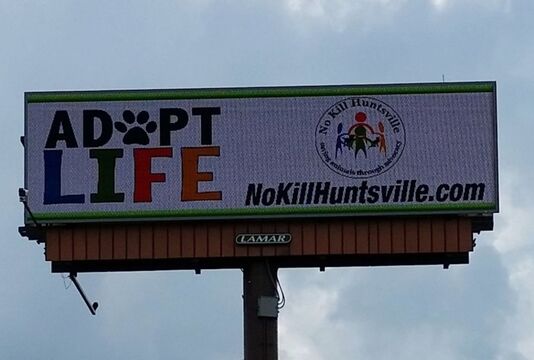



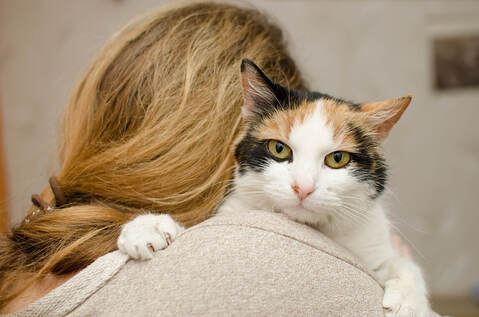
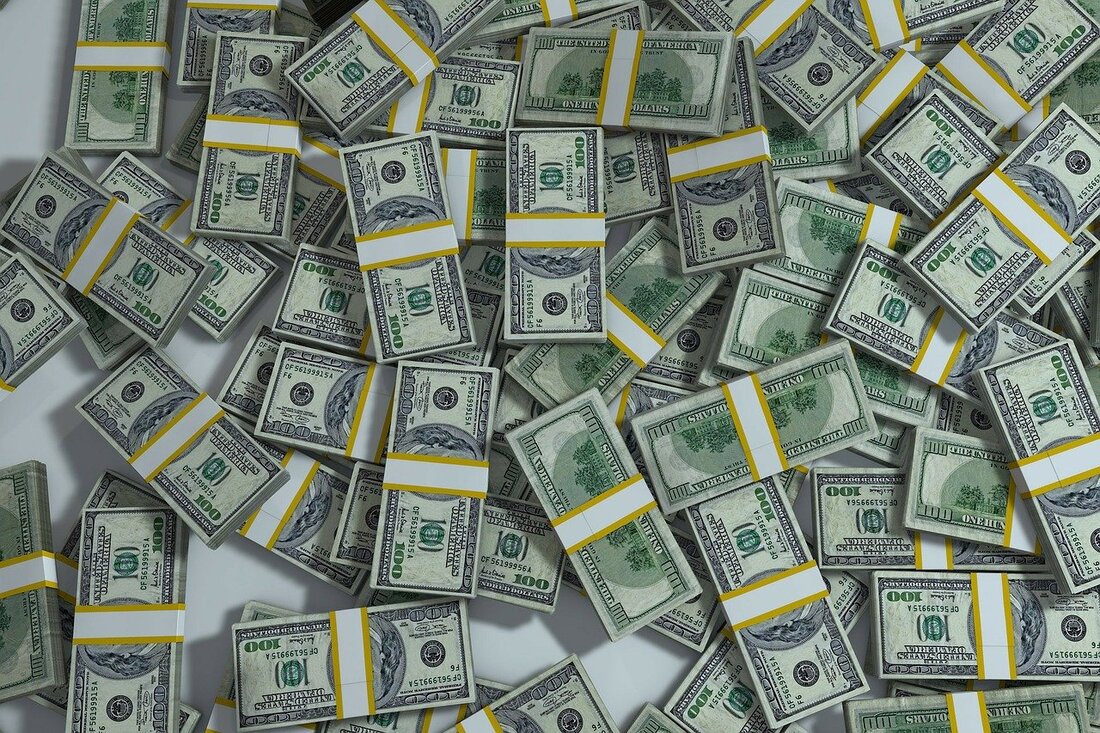
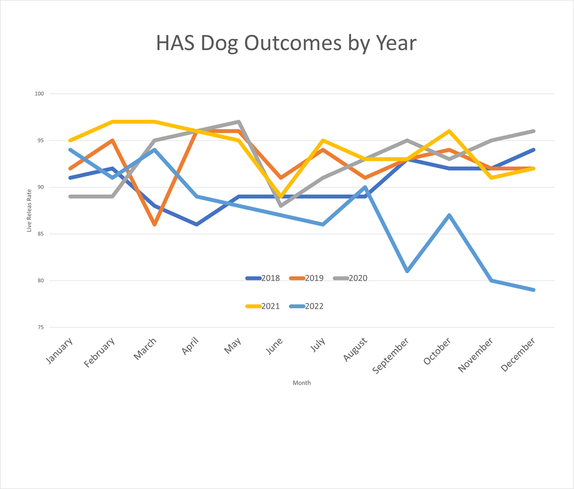
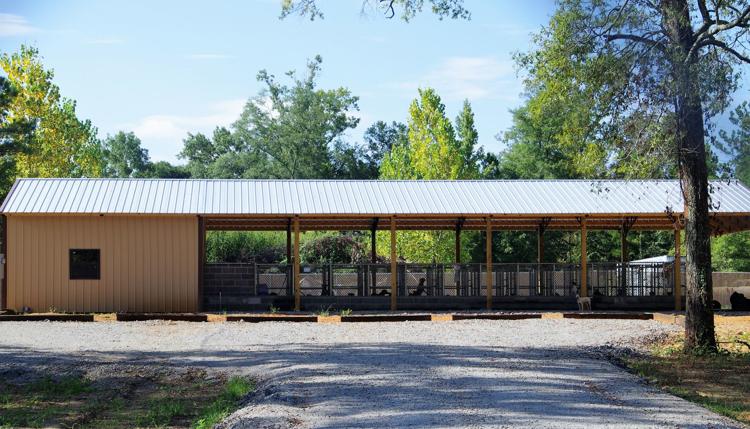
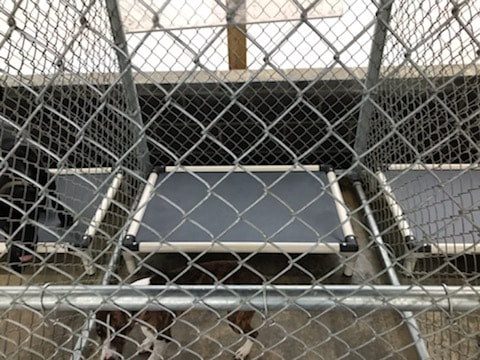


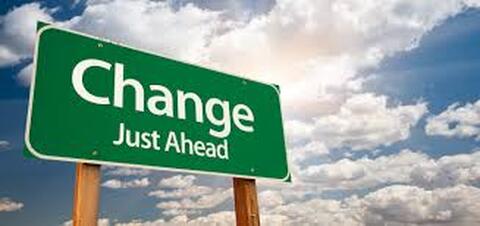

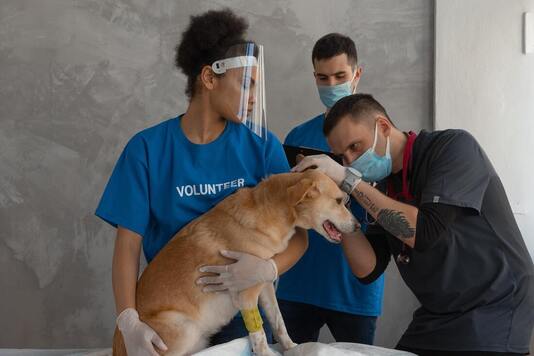


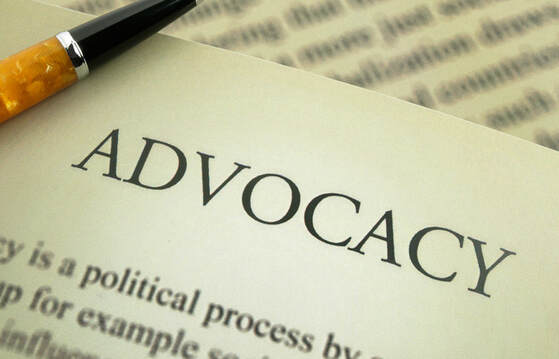


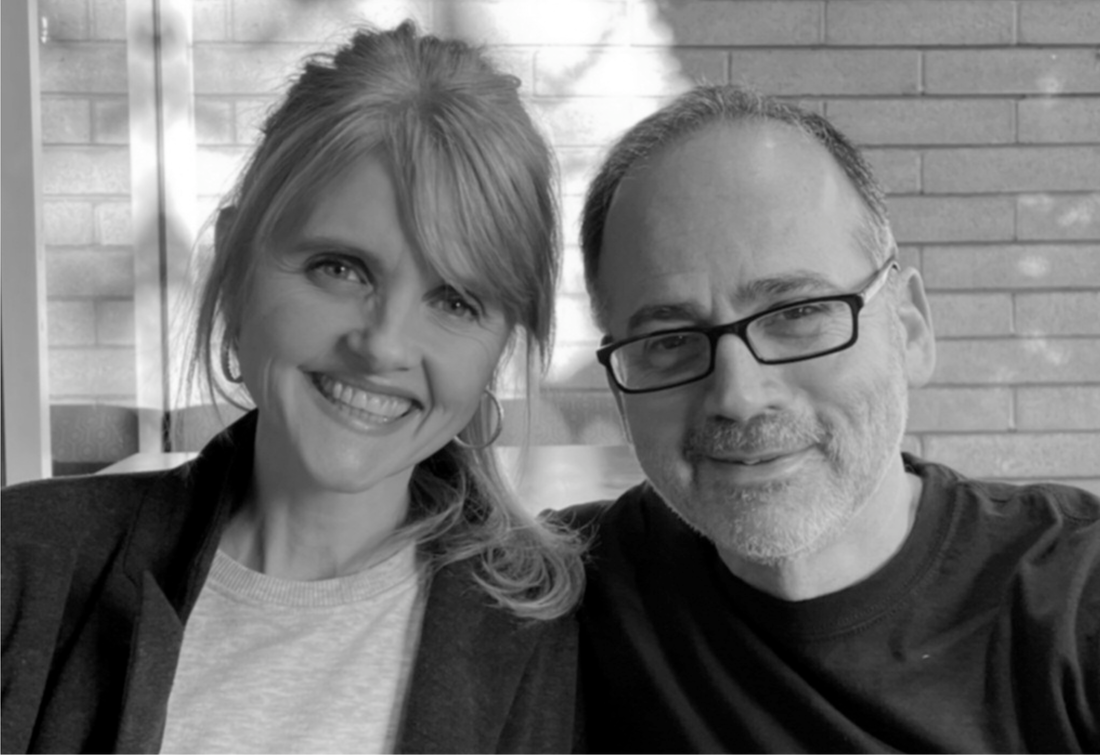
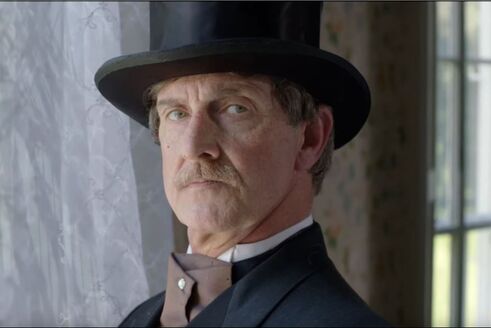
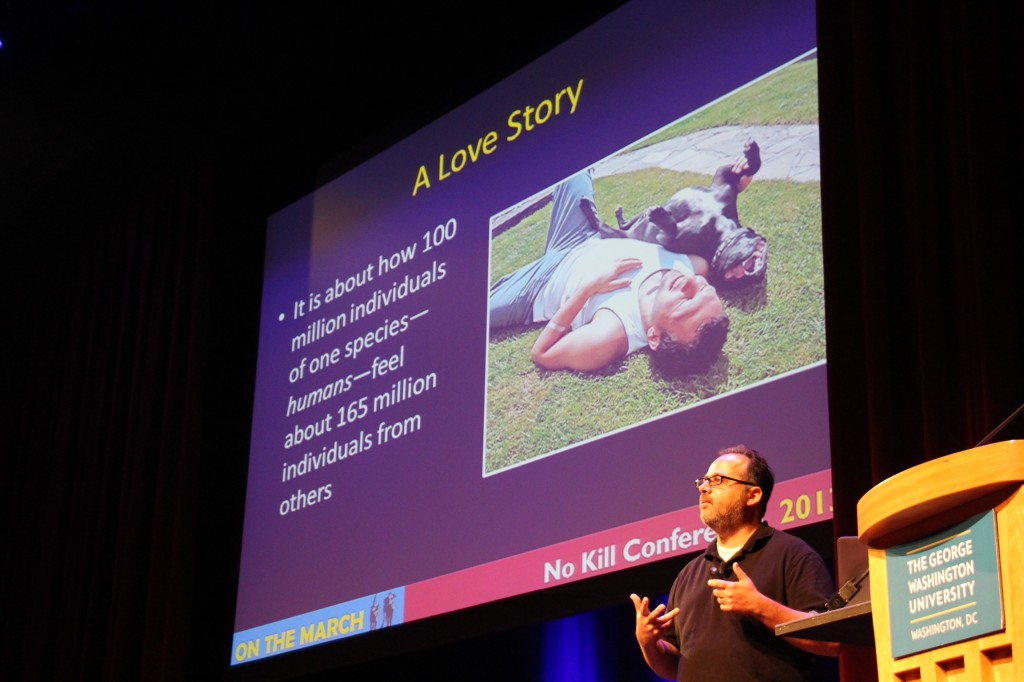
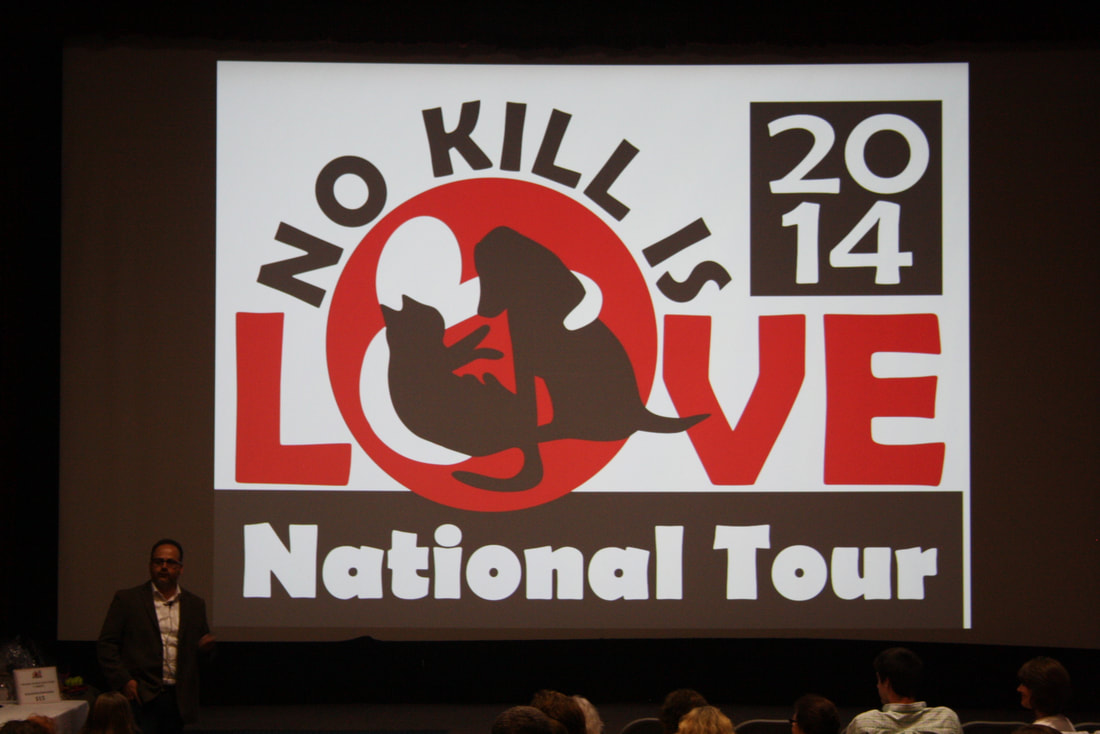









 RSS Feed
RSS Feed